Caryn’s Thoughts

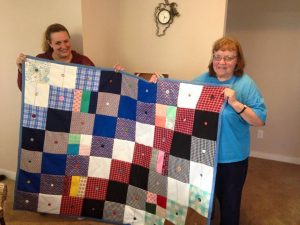 My sister-in-law, Debbie Cook is an expert craftswoman. In her lifetime, she has made many, various gifts and items to sell, that she handmade with love. Many a baby has a sampler with their name and date of birth on it in cross stitch that is cherished by the child and its parents. Many is the person who owns a quilt made by Debbie’s hands. She has also done sewing through the years, making clothes for her girls, Machelle and Susan. Debbie, along with her parents, Walt and Joann Schulenberg and her sister, Brenda Schulenberg, had booths in many craft fairs over the years, though in recent years craft fairs have somewhat dwindled…a sad thing really, because they provided awesome, and sometimes one-of-a-kind, gifts for many people to give to loved ones.
My sister-in-law, Debbie Cook is an expert craftswoman. In her lifetime, she has made many, various gifts and items to sell, that she handmade with love. Many a baby has a sampler with their name and date of birth on it in cross stitch that is cherished by the child and its parents. Many is the person who owns a quilt made by Debbie’s hands. She has also done sewing through the years, making clothes for her girls, Machelle and Susan. Debbie, along with her parents, Walt and Joann Schulenberg and her sister, Brenda Schulenberg, had booths in many craft fairs over the years, though in recent years craft fairs have somewhat dwindled…a sad thing really, because they provided awesome, and sometimes one-of-a-kind, gifts for many people to give to loved ones.
In the years since she quit participating in craft fairs, Debbie has enjoyed camping a lot. Since her husband, LJ 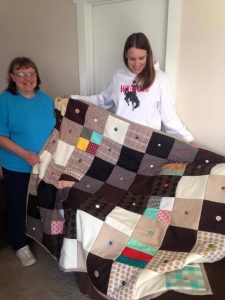 Cook retired, they have been able to go camping a lot more than they could before. In fact, they would probably live in the Big Horn Mountains all summer, if not year round. Of course, their girls, Machelle and Susan probably wouldn’t like that much, because they wouldn’t get to see them as often as they do now. Not that life doesn’t make it difficult, because everyone is busy, but if their parents lived in the mountains, it would be harder to go visit. For Debbie, living in the mountains wouldn’t hinder her hobbies much, because much of it can be done anywhere.
Cook retired, they have been able to go camping a lot more than they could before. In fact, they would probably live in the Big Horn Mountains all summer, if not year round. Of course, their girls, Machelle and Susan probably wouldn’t like that much, because they wouldn’t get to see them as often as they do now. Not that life doesn’t make it difficult, because everyone is busy, but if their parents lived in the mountains, it would be harder to go visit. For Debbie, living in the mountains wouldn’t hinder her hobbies much, because much of it can be done anywhere.
Debbie loves being a grandma, and enjoys spending time with grandsons, Weston and Easton Moore, and granddaughters, Jala Satterwhite and Kaytlyn Griffith. These days, since the kids are all getting grown up, they are a big help to her and LJ too. She used to spend more time with the kids, of course, because when they were in school they often came to her house after school, but now the older three are driving, so there is no need to pick them up or babysit them. It is always sad when the active grandparent days are behind us, then we must wait for the great grandchildren to begin to come. Of course, we still have our grandchildren, but we don’t have the babies, and I think that makes every grandparent a little bit sad.
As life goes on, Debbie and LJ are looking forward to many more years of camping in the Big Horns with their family. They all love to camp as a group, sitting around the campfire at night just enjoying the warmth and  !!
!! comradery, as well as the occasional moose that strolls through the camp. They used to go hunting, and liked getting the wild meat, but they haven’t really done that in a number of years. Now they hunt with their eyes, looking for the best specimens, but not shooting them. In that, they have had great success. Today is Debbie’s 68th birthday. Happy birthday Debbie!! Have a great day!! We love you!!
comradery, as well as the occasional moose that strolls through the camp. They used to go hunting, and liked getting the wild meat, but they haven’t really done that in a number of years. Now they hunt with their eyes, looking for the best specimens, but not shooting them. In that, they have had great success. Today is Debbie’s 68th birthday. Happy birthday Debbie!! Have a great day!! We love you!!
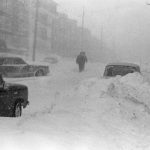
 As the United States is in the grip of a fierce snow storm, I am reminded of another snow storm that happened February 21 – 23, 1971. The storm is considered Oklahoma’s extreme storm. This blizzard buried northwestern Oklahoma under as much as three feet of snow, and that doesn’t include the drifting. The town of Buffalo was the hardest hit. They reported 23 inches of snow on the 21st alone, and a state-record snow depth of 36 inches by the morning of the 24th. The northern part of the state was just buried.
As the United States is in the grip of a fierce snow storm, I am reminded of another snow storm that happened February 21 – 23, 1971. The storm is considered Oklahoma’s extreme storm. This blizzard buried northwestern Oklahoma under as much as three feet of snow, and that doesn’t include the drifting. The town of Buffalo was the hardest hit. They reported 23 inches of snow on the 21st alone, and a state-record snow depth of 36 inches by the morning of the 24th. The northern part of the state was just buried.
Oklahoma tends to be a mild weather state, with temperatures in December, January, and February averaging in the 50s. This week is the anniversary of the 1971 blizzard, which was likely the most intense winter storm ever to hit the Sooner State, although the current storm might rival it now. With the current storm, Oklahoma is seeing temperatures averaging -6°. The prior record was in 1909 at 7°. The power company had had to implement rolling blackouts to assure that the power grids don’t fail. I don’t think they have received the amount of snow with the current storm, but the severity is very similar, when you think about it. Anytime a storm is is bad enough to shut things down, especially the power, it is severe.
When the blizzard of 1971 finally ended, 36 inches of snow was measured in Buffalo, which was the state’s record for the highest snowfall total, but the snow drifts measured as high as 20 feet tall. While northwestern Oklahoma was hit very hard, just a short distance to the west in the Oklahoma Panhandle, only light snow fell with Boise City receiving only 3 inches and only 2 inches in Kenton. The 1971 storm put ranchers in a precarious position until C-124s from the Oklahoma Air National Guard dropped 150 tons of hay to stranded Oklahoma cattle. Local cattleman flew along with the aircraft to guide the aircrews to the stranded cattle. The massive loss numbers of 15,000 in livestock accounted for much of the $2 million in damages.
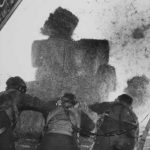
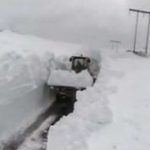 The vicious storm became known as the 84-hour blizzard. It actually occurred across the eastern half of the Texas and Oklahoma Panhandles. The storm his the worst un Oklahoma, but in the region, 8 deaths were reported…7 in Pampa, 1 in the Oklahoma Panhandle. The average drifts were 10 to 20 feet. Storms like these will not likely be soon forgotten, if they are ever forgotten. People are really never prepared for such cold temperatures and so much snow in the southern states. We can try to prepare, but when year after year goes by without such a sever storm, we soon become complacent, until the next one hits us, that is.
The vicious storm became known as the 84-hour blizzard. It actually occurred across the eastern half of the Texas and Oklahoma Panhandles. The storm his the worst un Oklahoma, but in the region, 8 deaths were reported…7 in Pampa, 1 in the Oklahoma Panhandle. The average drifts were 10 to 20 feet. Storms like these will not likely be soon forgotten, if they are ever forgotten. People are really never prepared for such cold temperatures and so much snow in the southern states. We can try to prepare, but when year after year goes by without such a sever storm, we soon become complacent, until the next one hits us, that is.
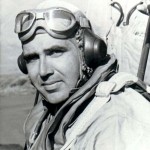
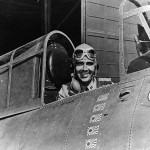 When a war begins, I doubt if anyone is thinking about the medals or the honors they might receive, because what they really want is for the war to be over already. Nobody enjoys going to war…not even the one who starts the war. There are never any guarantees that you will come out of a war alive, so most people would rather not go at all. Nevertheless, when a soldier goes into war, he or she has taken a vow to do their very best, and to fight to the death, if necessary. When World War II got started, the United States really intended to stay out of it. They vowed to stay neutral…until the Japanese attacked Pearl Harbor in Hawaii. Once the United States entered World War II, however, we were in it to win it.
When a war begins, I doubt if anyone is thinking about the medals or the honors they might receive, because what they really want is for the war to be over already. Nobody enjoys going to war…not even the one who starts the war. There are never any guarantees that you will come out of a war alive, so most people would rather not go at all. Nevertheless, when a soldier goes into war, he or she has taken a vow to do their very best, and to fight to the death, if necessary. When World War II got started, the United States really intended to stay out of it. They vowed to stay neutral…until the Japanese attacked Pearl Harbor in Hawaii. Once the United States entered World War II, however, we were in it to win it.
Lieutenant Edward O’Hare, an American naval aviator of the United States Navy, was born on March 13, 1914 in Saint Louis, Missouri, to Selma Anna (Lauth) and Edward Joseph O’Hare. He was of Irish and German descent. Edward, who was nicknamed “Butch,” had two sisters, Patricia and Marilyn. Their parents divorced in 1927. Butch and his sisters stayed with their mother in Saint Louis, and their father moved to Chicago. O’Hare joined the Navy, and from there, life moved pretty fast. On July 21, 1941, O’Hare met his future wife, Rita and asked her to marry him that night. He knew immediately that she was the one. They got married on September 6, 1941 and their daughter, Kathleen was born in January or February of 1943. O’Hare first met her when she was a month old, because of missions he was on.
In the Navy, O’Hare was stationed first on the USS Saratoga, then on the USS Enterprise, and then on the USS Lexington, flying a Grumman F4F-3 Wildcat. In mid-February 1942, the Lexington sailed into the Coral Sea. A town named Rabaul, at the very tip of New Britain, one of the islands that comprised the Bismarck Archipelago, had been invaded in January by the Japanese and transformed into a stronghold. In fact, it had been turned into one huge airbase. The occupation of Rabaul put the Japanese in prime striking position for the Solomon Islands, which would have been put them in a perfect position for expanding their ever-growing Pacific empire. Given the mission of destabilizing the Japanese position on Rabaul with a bombing raid, the fighters on the Lexington took off from the aircraft carrier’s deck in a raid against the Japanese position at Rabaul. Just moments later, Lieutenant O’Hare became America’s first World War II flying ace. In the battle that took place on February 20, 1942, O’Hare believed he had shot down six bombers and damaged a seventh. Captain Frederick C Sherman later reduced that number to five, as four of the reported nine bombers were still overhead when he pulled off. Nevertheless, in the opinion of Admiral Brown and of Captain Sherman, commanding the Lexington, Lieutenant O’Hare’s actions may have saved the carrier from serious damage or even loss. In a mere four minutes, O’Hare shot down five Japanese G4M1 Betty bombers, bringing a swift end to the Japanese attack and earning O’Hare the designation “Ace,” which was given to any pilot who had five or more downed enemy planes to his credit. The attack on the bombers was great, but it ruined the element of surprise, so the mission was called off.
On the night of November 26, 1943, the USS Enterprise introduced the experiment in the co-operative control of Avengers and Hellcats for night fighting. The team consisted of three planes, breaking up a large group of land-based bombers. O’Hare volunteered to lead this mission to conduct the first-ever Navy nighttime fighter 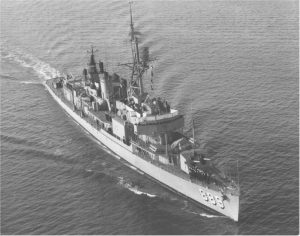
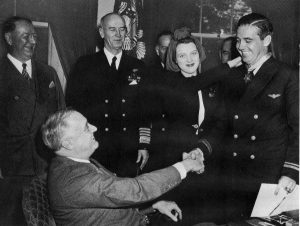 attack from an aircraft carrier to intercept a large force of enemy torpedo bombers. When the call came to man the fighters, Butch O’Hare was eating. He grabbed up part of his supper in his fist and started running for the ready room. It was to be his final mission. When it was over, O’Hare was missing in action. He was declared dead a year later. The airport in Chicago and a destroyer would later be named in his honor. He lived life fast and died young, but he was always in it to win it.
attack from an aircraft carrier to intercept a large force of enemy torpedo bombers. When the call came to man the fighters, Butch O’Hare was eating. He grabbed up part of his supper in his fist and started running for the ready room. It was to be his final mission. When it was over, O’Hare was missing in action. He was declared dead a year later. The airport in Chicago and a destroyer would later be named in his honor. He lived life fast and died young, but he was always in it to win it.

 It seems that no one is exempt from the effects of Covid-19. My grand nephew, Easton Moore is no exception. While he turned 16 a year ago, he didn’t get his driver’s license until July. Things just got put on hold. With the stay at home orders and such, having 50 daytime and 10 nighttime driving times. Then Easton just didn’t really let it bother him. Then, when he got a job at McDonald’s and found out that riding his bicycle to work all the time wasn’t so much fun. So, he made the decision, and before long he had his license.
It seems that no one is exempt from the effects of Covid-19. My grand nephew, Easton Moore is no exception. While he turned 16 a year ago, he didn’t get his driver’s license until July. Things just got put on hold. With the stay at home orders and such, having 50 daytime and 10 nighttime driving times. Then Easton just didn’t really let it bother him. Then, when he got a job at McDonald’s and found out that riding his bicycle to work all the time wasn’t so much fun. So, he made the decision, and before long he had his license.
Easton was at McDonald’s for about a month before he had  saved up enough money to buy a car from a friend. He very quickly began to enjoy having his car so he could really express himself. At “Red, White, and Blue Day,” Easton went out and bought a flag to show his patriotism. That is how many people feel about their car. It is an extension of themselves. It displays their personality and values. I’m proud of Easton’s patriotism, as I know his parents are too. These days, he is saving money to get a better car. That’s a good goal. Most kids start out with a “beater” to drive at first. A “beater” isn’t necessarily a “piece of junk” car, but rather just an older car that doesn’t need full coverage, because it’s not worth very much.
saved up enough money to buy a car from a friend. He very quickly began to enjoy having his car so he could really express himself. At “Red, White, and Blue Day,” Easton went out and bought a flag to show his patriotism. That is how many people feel about their car. It is an extension of themselves. It displays their personality and values. I’m proud of Easton’s patriotism, as I know his parents are too. These days, he is saving money to get a better car. That’s a good goal. Most kids start out with a “beater” to drive at first. A “beater” isn’t necessarily a “piece of junk” car, but rather just an older car that doesn’t need full coverage, because it’s not worth very much.
Easton is very good at “techy” things, which is common in his generation. Recently, some of the batteries on a few of the family phones needed to be replaced. Easton went on YouTube and quickly learned how to do that. The first one he replaced was his mom, my niece Machelle Moore’s; then came Easton’s phone; then his dad, Steve’s. First mine then his then his dads. It didn’t take him long to get real good at it. It took him ten minutes to replace the second battery on his mom’s phone, plus she needed a new ear piece and Easton was able to do that at the same time. Now, she can hear when someone calls…it’s a nice perk.


Easton comes from a tall family. His dad is 6’2″ tall; his dad’s brother is 6’8″ tall; and his grandpa, LJ Cook, Machelle’s dad, is 6’6″ tall. Easton really can’t wait to be taller than his dad. It’s a fun goal for him, and he has a real possibility of making that goal. Time will tell, of course, but Easton is already close to that goal, if he hasn’t passed it already, and since he will be growing for a few years yet, I have no doubt of his success. Today is Easton’s 17th birthday. Happy birthday Easton!! Have a great day!! We love you!!
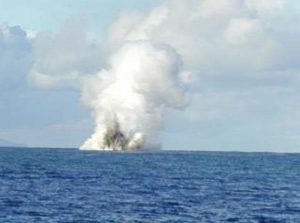 I realize that many people, me included, would have no desire to explore the inside of a volcano, but for scientists of volcanos…volcanologists, it is somehow important. A dormant volcano would be fairly easy to explore. There is less chance of getting caught in an eruption, but for one that isn’t dormant, it isn’t so easy. I don’t think I would want to try to explore Kilauea, because…well, it goes up all the time. Another very active volcano, Kavachi is not only active, but it is underwater. Kavachi is located in the south-west Pacific Ocean, south of Vangunu Island in the Solomon Islands. and is referred to locally as Rejo te Kavachi, meaning “Kavachi’s oven.” Kavachi has become active and then eroded back into the sea at least eight times since its first recorded eruption in 1939.
I realize that many people, me included, would have no desire to explore the inside of a volcano, but for scientists of volcanos…volcanologists, it is somehow important. A dormant volcano would be fairly easy to explore. There is less chance of getting caught in an eruption, but for one that isn’t dormant, it isn’t so easy. I don’t think I would want to try to explore Kilauea, because…well, it goes up all the time. Another very active volcano, Kavachi is not only active, but it is underwater. Kavachi is located in the south-west Pacific Ocean, south of Vangunu Island in the Solomon Islands. and is referred to locally as Rejo te Kavachi, meaning “Kavachi’s oven.” Kavachi has become active and then eroded back into the sea at least eight times since its first recorded eruption in 1939.
It is very strange to me to see pictures and videos of volcano erupting in the middle of the ocean. It seems so unnatural that fire and water could mix and the water not put out the fire. It’s a strange concept, but one that has baffled me for years. I think that the thought of fire and water has maybe been the curiosity behind the exploration of these underwater volcanoes. In May 2000, an international research team aboard the CSIRO 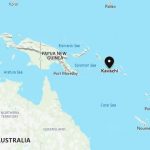 research vessel Franklin fixed the Kavachi volcano at 8° 59.65’S, 157° 58.23’E. The vent of the volcano was below sea level, but frequent eruptions ejected molten lava up to 230 feet above sea level, and sulfurous steam plumes up to 1,600 feet. The team mapped a roughly conical feature rising from 3,600 feet water depth, with the volcano having a basal diameter of about 5.0 miles. Of course, underwater volcanoes were the foundation of the Hawaiian Islands, so it is not a odd idea that when the Kavachi volcano erupted in 2003, a 49-foot island formed above the surface. The small island disappeared a short time later, so I suppose the volcano would have to erupt almost constantly in order to form an island that would last.
research vessel Franklin fixed the Kavachi volcano at 8° 59.65’S, 157° 58.23’E. The vent of the volcano was below sea level, but frequent eruptions ejected molten lava up to 230 feet above sea level, and sulfurous steam plumes up to 1,600 feet. The team mapped a roughly conical feature rising from 3,600 feet water depth, with the volcano having a basal diameter of about 5.0 miles. Of course, underwater volcanoes were the foundation of the Hawaiian Islands, so it is not a odd idea that when the Kavachi volcano erupted in 2003, a 49-foot island formed above the surface. The small island disappeared a short time later, so I suppose the volcano would have to erupt almost constantly in order to form an island that would last.
Of course, that strangest thing about Kavachi is that while the volcano is quite active, it has another strange anomaly to it. In 2015, marine life has been found living inside the Kavachi crater, including two species of sharks and a sixgill stingray. It seems so strange that they could live in an environment that must be quite acidic. The scientists haven’t been able to go in and explore yet, because of the possibility of an eruption.  Finally they took a chance and dropped a camera into the volcano. Concerned about activity from the volcano, the expedition members only left the camera in the hot, acidic water around the volcano for about an hour. Still, it was all they needed to find the wildlife inside. Of course, during an eruption, there is no way this marine life could live inside the volcano. That makes me wonder if they somehow know the eruption is coming so they can get out, or do they simply die when an eruption occurs. That somehow doesn’t seem like the case, because eventually there would be no more marine life in the volcano. I guess that is just a question we will probably never have an answer to.
Finally they took a chance and dropped a camera into the volcano. Concerned about activity from the volcano, the expedition members only left the camera in the hot, acidic water around the volcano for about an hour. Still, it was all they needed to find the wildlife inside. Of course, during an eruption, there is no way this marine life could live inside the volcano. That makes me wonder if they somehow know the eruption is coming so they can get out, or do they simply die when an eruption occurs. That somehow doesn’t seem like the case, because eventually there would be no more marine life in the volcano. I guess that is just a question we will probably never have an answer to.
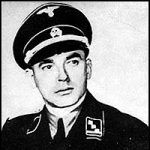
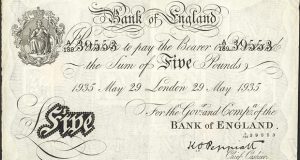 When we think of the weapons of warfare, we think of guns, planes, tanks, and such, but there are weapons of warfare that while seemingly far less lethal, are still deadly…in other ways. Economic warfare is something I would never have considered, even though it makes perfect sense. The Germans in World War II thought of every possible weapon, or very close to it. If a nation has no money to bankroll a war, they are very likely going to lose. That was the position that Germany wanted to put Great Britain in during World War II. They decided on an age-old plan…if you’re a criminal that is. Counterfeiting money to tank the economy.
When we think of the weapons of warfare, we think of guns, planes, tanks, and such, but there are weapons of warfare that while seemingly far less lethal, are still deadly…in other ways. Economic warfare is something I would never have considered, even though it makes perfect sense. The Germans in World War II thought of every possible weapon, or very close to it. If a nation has no money to bankroll a war, they are very likely going to lose. That was the position that Germany wanted to put Great Britain in during World War II. They decided on an age-old plan…if you’re a criminal that is. Counterfeiting money to tank the economy.
The year was 1942 and for the purpose of artificially causing inflation of the British pound, leading to the economic collapse of the competition, while simultaneously funding some of their own projects, the production of the British “White Notes” was about to start. It would not start in Britain, however. These “White Notes” would be made behind the gates of Sachsenhausen concentration camp. The Germans decided to begin counterfeiting British banknotes. These tactics were considered particularly wrong by the German soldiers themselves, basically sneaky and unprofessional. However, soon after World War II, it became common practice for different countries to counterfeit the currency of their opposition in times of war. Evil knows no bounds.
The first attempt at counterfeiting, known as Operation Andrew, failed because of disagreements between top brass inside of the Nazi Party. Friederich Walter Bernhard Krueger was placed in charge of Germany’s second attempt at counterfeiting British notes. The second operation’s codename was Bernhard because that is what Krueger was called. In preparation for the production, Bernhard assembled a team of about 140 men/prisoners. Some historians have suggested that it was as many as 300. These men were told they would receive better treatment and special perks like radio, newspapers, warm barracks, if they participated in the operation. The men had nothing to lose. All they had to do was counterfeit 400,000 British banknotes a month.
After a year of hard work, and the prisoners finally successfully counterfeited the British White Note. By 1945, conservative estimates figure 70,000,000 notes were printed by the inmates. It was a cache worth upwards of £100,000,000. In order to complete this herculean task, the team of counterfeiters studied vast quantities of authentic White Notes. They broke this massive task up into seven smaller tasks, each one seemingly more difficult than the last. “These tasks included: Discovering secret security marks, Engraving the vignette, Perfecting the paper, Creating identical ink, Solving the serial numbering system, Re-creating the signatures, dates and places of origin, and Printing the notes. The men found no fewer than 150 different security marks hidden on the White Notes. There were intentional minor defects and flaws that the Bank of England incorporated as anti-counterfeiting devices. To make things even harder, these security devices were different for each denomination. Nonetheless, in short order, the counterfeit team produced a plate for each denomination: £5, £10 £20 and £50.” The plan was coming together and soon they were ready to execute it.
The plan was to fly over and drop the counterfeit money from the planes. Once it was laundered and in the hands of the people, they could spend it and because there was no real backing for the money, the economy would tank. The operation went on for a time, but with the late February and early March 1945 advance of the Allied armies, all production of notes at Sachsenhausen ceased. The equipment and supplies were packed and transported, with the prisoners, to the Mauthausen-Gusen concentration camp in Austria, arriving on 12 March. 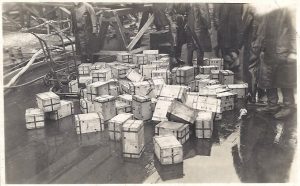
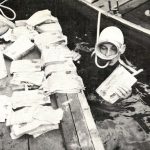 They had to hide the evidence. They didn’t give up on the process, however. Shortly afterwards Krüger arranged a transfer of the equipment to the Redl-Zipf series of tunnels so production could be restarted. The order to resume production was soon rescinded, however, and the prisoners were ordered to destroy the cases of money they had with them. The equipment and any money not burned was loaded onto trucks and sunk in the Toplitz and Grundlsee lakes.
They had to hide the evidence. They didn’t give up on the process, however. Shortly afterwards Krüger arranged a transfer of the equipment to the Redl-Zipf series of tunnels so production could be restarted. The order to resume production was soon rescinded, however, and the prisoners were ordered to destroy the cases of money they had with them. The equipment and any money not burned was loaded onto trucks and sunk in the Toplitz and Grundlsee lakes.
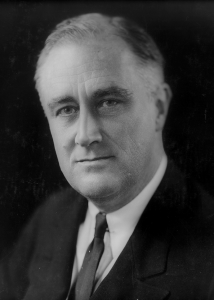
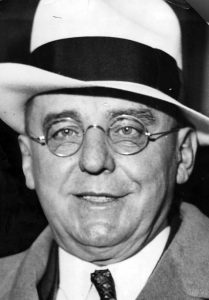 On February 15, 1933, following his return from a fishing trip in the Bahamas, President Franklin Delano Roosevelt was met by a large crowd of thousands of people. The crown was so excited to see the president, but they soon found themselves in the middle of a terrifying situation. Suddenly, before their eyes shooting began. Giuseppi Zangara, an anarchist gunman opened fire, in an attempt to assassinate President Elect Franklin D Roosevelt. Zangara shouted, “Too many people are starving!” Of course, the driving force behind the attack was the Great Depression. People were starving, jobs had been lost, banks were going under, and true depression had set in. Desperation was the next step.
On February 15, 1933, following his return from a fishing trip in the Bahamas, President Franklin Delano Roosevelt was met by a large crowd of thousands of people. The crown was so excited to see the president, but they soon found themselves in the middle of a terrifying situation. Suddenly, before their eyes shooting began. Giuseppi Zangara, an anarchist gunman opened fire, in an attempt to assassinate President Elect Franklin D Roosevelt. Zangara shouted, “Too many people are starving!” Of course, the driving force behind the attack was the Great Depression. People were starving, jobs had been lost, banks were going under, and true depression had set in. Desperation was the next step.
President Roosevelt had just delivered a speech in Miami’s Bayfront Park from the back seat of his open touring car when Zangara opened fire with six rounds. While Zangara missed the president, five people were hit. One of those hit was the mayor of Chicago, Anton Cermak, who was also in attendance. The mayor received a mortal stomach wound in the attack. While every attempt possible was used to try to save the mayor’s life, he later died of his wounds. Four other bystanders were also wounded. One of them, a woman, is was not expected to recover.
Thousands of people witnessed the shooting, which occurred in a dense crowd at Biscayne park on the Miami water front. The people acted quickly. A woman named Mrs W F Cross, of Miami was the first to seize the assassin’s gun. Zangara was quickly captured after that and people in the crowd began to beat him severely. The men that had tackled the assailant, might have beaten him to death, if Roosevelt had not intervened, telling the crowd to leave justice to the authorities. At police headquarters he was found to be of maniacal anarchistic tendencies. He ranted, “I like Roosevelt, all right, but I don’t like presidents.” President Roosevelt, who had stayed to speak to Mayor Cermak after the speech, immediately got Cermak into the Presidential Limousine and rushed him to the hospital. Cermak told the president that he was glad it was him and not the president. Noble words from a man who was about to die. Mayor Cermak, who did not lose consciousness during any of the time prior to being put on the operating table, was wounded by a single bullet which entered his back just above the right kidney.
For a time there were reports that the gunman might have been a Chicago gangster sent down here to murder 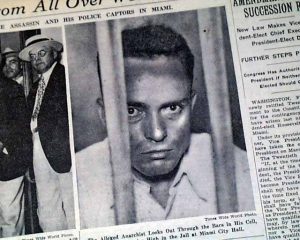
 Mayor Cermak, but the subsequent developments showed that was not the case. Zangara was initially tried for attempted murder and sentenced to 80 years in prison, but when Mayor Cermak later died of his wounds, Zangara was retried and sentenced to death. Zangara died on the electric chair on March 20, 1933. I find myself amazed that his death came so quickly after his conviction. Most often it takes years to put someone to death. Nevertheless, just over a month later, the execution took place. At least that one time, justice was swift.
Mayor Cermak, but the subsequent developments showed that was not the case. Zangara was initially tried for attempted murder and sentenced to 80 years in prison, but when Mayor Cermak later died of his wounds, Zangara was retried and sentenced to death. Zangara died on the electric chair on March 20, 1933. I find myself amazed that his death came so quickly after his conviction. Most often it takes years to put someone to death. Nevertheless, just over a month later, the execution took place. At least that one time, justice was swift.

 Let’s face it. This past year has been…the worst. The closures, job losses, and personal losses; many of which are still going on a year later, have made us all edgy, irritable, and even depressed. Many people are still in a place where social distancing is the norm. For my family, Thanksgiving was cancelled, because my husband, Bob and I had Covid-19. Then Christmas was delayed 24 days, because my daughter, Corrie Petersen and her husband Kevin had Covid-19. Kevin got it the worst, as his system is compromised, but after a week in the hospital, he is home and doing very well. We lost out on so much in 2020, and now we are back to almost normal.
Let’s face it. This past year has been…the worst. The closures, job losses, and personal losses; many of which are still going on a year later, have made us all edgy, irritable, and even depressed. Many people are still in a place where social distancing is the norm. For my family, Thanksgiving was cancelled, because my husband, Bob and I had Covid-19. Then Christmas was delayed 24 days, because my daughter, Corrie Petersen and her husband Kevin had Covid-19. Kevin got it the worst, as his system is compromised, but after a week in the hospital, he is home and doing very well. We lost out on so much in 2020, and now we are back to almost normal.
Valentine’s Day is a little bit different holiday, since it is mostly about couples, but since Bob and I prefer not to go to a restaurant on Valentine’s Day, because of the crowds, we are going to be staying home, but its not going to be just us. This year, our family is a little bit battered, because we have lost one of the members of the couples…my sister-in-law, Rachel Schulenberg. That leaves her husband, my brother-in-law, Ron and their son, Tucker in a very different place than they expected. We decided to ease them into the coming year, that will be inevitably hard, by having a small group Valentine’s Day gathering. There will be five of us, Bob, Ron,  Tucker, my sister-in-law, Brenda Schulenberg, and me. Unfortunately, it will be a sad time, because Rachel won’t be with us, but the reality is that it’s about love, and we love Ron and Tucker. We want to help them move forward, and I know that Rachel would be pleased that her guys aren’t alone on this difficult day. We aren’t the only family that is living with battle scars. There are so many families that have lost someone or have someone in the hospital. There are many people who cannot be with their loved ones today. Some have to work, and some live far away too. There are some in my family in that place, and while that feels sad for some of us, they are in the place they need to be.
Tucker, my sister-in-law, Brenda Schulenberg, and me. Unfortunately, it will be a sad time, because Rachel won’t be with us, but the reality is that it’s about love, and we love Ron and Tucker. We want to help them move forward, and I know that Rachel would be pleased that her guys aren’t alone on this difficult day. We aren’t the only family that is living with battle scars. There are so many families that have lost someone or have someone in the hospital. There are many people who cannot be with their loved ones today. Some have to work, and some live far away too. There are some in my family in that place, and while that feels sad for some of us, they are in the place they need to be.
Today is not supposed to be a sad day, but sometimes that is just the way it is. Nevertheless, we also have reasons to be happy. Family, friends, hope, and love, are all a part of our futures now too. Rachel is in Heaven, but she, along with all of our other loved ones are happy, and they are in our future now. This is a day to rejoice too. There are blessings that come with this day. Wedding anniversaries, like that of my niece Lindsay Moore and her husband Shannon, who’s daughter Hallie was born and went to Heaven on December 19, 2020 can be sad, but they are still celebrating, because they have been together for 7 years now and they will see Hallie Joy again soon. She lives in their future now, not their past. It’s about love, and Hallie would want them 
 to go forward. For me, the main this is that we never forget those we love.
to go forward. For me, the main this is that we never forget those we love.
Of course, many of us celebrate this day because we love our own sweethearts. We are all blessed with loved ones, partners, spouses, or other family members. There is really no greater emotion than love. I don’t know how any of us would survive without it. This world can be cruel, and it is love that balances it out for us. So today, we celebrate, even if life has left us a little sad. Because, it is really all about love.
 With Abraham Lincoln’s birthday just behind us…he was born on February 12, 1809. Most of us know that Lincoln had no formal education. We know that he gave amazing speeches and that he freed the slaves. We also know that he was assassinated, but there are a number of other Lincoln Facts that I didn’t know, and maybe you didn’t either. One sad fact is that Lincoln lost his mother at the tender age of 9 years old, when she drank poison milk. She wasn’t poisoned, but it turns out that many people died of a strange “milk sickness” that was caused by a cow eating a “poisonous to humans” plant called White Snakeroot. I’m sure it was a horrible time for Lincoln, but his father remarried, and the widow, Sarah Bush Johnston was a kind woman, who got along well with her step-son.
With Abraham Lincoln’s birthday just behind us…he was born on February 12, 1809. Most of us know that Lincoln had no formal education. We know that he gave amazing speeches and that he freed the slaves. We also know that he was assassinated, but there are a number of other Lincoln Facts that I didn’t know, and maybe you didn’t either. One sad fact is that Lincoln lost his mother at the tender age of 9 years old, when she drank poison milk. She wasn’t poisoned, but it turns out that many people died of a strange “milk sickness” that was caused by a cow eating a “poisonous to humans” plant called White Snakeroot. I’m sure it was a horrible time for Lincoln, but his father remarried, and the widow, Sarah Bush Johnston was a kind woman, who got along well with her step-son.
At the age of 21, Abraham Lincoln became a champion wrestler. I don’t know how he would have fared in WWE, but then that is a lot of drama and show too. Nevertheless, he wrestled in approximately 300 matches, and only lost once. It is thought that his long legs helped him lock his opponent down. Lincoln reportedly talked a little smack in the ring too. According to Carl Sandburg’s biography of Lincoln, “Honest Abe once challenged an entire crowd of onlookers after dispatching an opponent: ‘I’m the big buck of this lick. If any of you want to try it, come on and whet your  horns.’ There were no takers.” Lincoln’s grappling exploits earned him an “Outstanding American” honor in the National Wrestling Hall of Fame.
horns.’ There were no takers.” Lincoln’s grappling exploits earned him an “Outstanding American” honor in the National Wrestling Hall of Fame.
Lincoln is also the only president to have personally test-fired rifles outside the White House, including one by my ancestor, Christopher Spencer who was the inventor of the Spencer Repeating Rifle. When Spencer signed his new rifle up for adoption right after the Civil War broke out, it was not well received by the Department of War Ordnance, that felt soldiers would waste ammunition by firing too rapidly with repeating rifles. The unit was also more expensive than Springfield Model 1861 rifled musket in use at the time. Nevertheless, shortly after the famous Battle of Gettysburg, Spencer was able to gain an audience with President Abraham Lincoln, who invited him to a shooting match and demonstration of the weapon on the lawn of the White House. President Lincoln was so impressed with the weapon that he ordered General James Wolfe Ripley to adopt it for production. 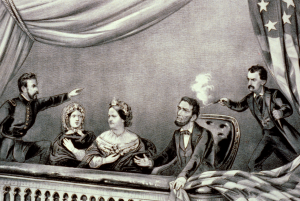 Unfortunately, Ripley disobeyed the order and continued to use the old single-shooters.
Unfortunately, Ripley disobeyed the order and continued to use the old single-shooters.
President Lincoln is also responsible for the safety of the presidents that followed him. Yes, there were failures, but without Lincoln’s decision to create the Secret Service on April 14, 1865, just hours before he was assassinated, many presidents in the future would not have had the quality of protection they did. The Secret Service did protect President Lincoln after his death, when grave robbers attempted to steal his body and hold it for a ransom of $200,000 and the release of one of their gang from prison. Their attempt was foiled by the Secret Service that President Lincoln had initiated.
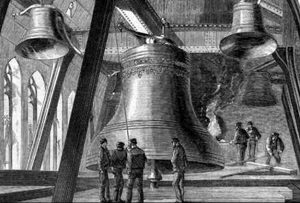 When you think of Big Ben, many of us think of a tower in London…or at least I did. The reality is that Big Ben isn’t the tower at all…it’s the bell. The tower is actually called the Elizabeth Tower…at least since 2012 when it was renamed that in honor of the current Queen Elizabeth. Prior to 2012, the tower was just called “the clock tower.” That was it’s official name, but it was nicknamed Saint Stephen’s tower. It’s funny that we can associate a specific name or idea to something, and have the whole thing totally wrong. The tower name is an interesting story, but that is not the only oddity when it comes to Big Ben.
When you think of Big Ben, many of us think of a tower in London…or at least I did. The reality is that Big Ben isn’t the tower at all…it’s the bell. The tower is actually called the Elizabeth Tower…at least since 2012 when it was renamed that in honor of the current Queen Elizabeth. Prior to 2012, the tower was just called “the clock tower.” That was it’s official name, but it was nicknamed Saint Stephen’s tower. It’s funny that we can associate a specific name or idea to something, and have the whole thing totally wrong. The tower name is an interesting story, but that is not the only oddity when it comes to Big Ben.
As interesting as that was to me, I find it even more interesting to find out that there is actually a prison in the tower. A third of the way, or 114 steps up inside the tower is the Prison Room, where MPs in breach of codes of conduct were imprisoned. The prison room was last used in 1880 when 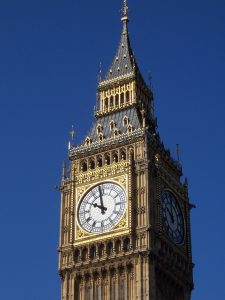 newly elected MP Charles Bradlaugh, who was an atheist, refused to swear allegiance to Queen Victoria on the Bible. He was kept in the prison room overnight. These days there is a pub named after him in Northampton. I’m not sure how many more people were imprisoned there, but it is certainly a strange use for a clock tower.
newly elected MP Charles Bradlaugh, who was an atheist, refused to swear allegiance to Queen Victoria on the Bible. He was kept in the prison room overnight. These days there is a pub named after him in Northampton. I’m not sure how many more people were imprisoned there, but it is certainly a strange use for a clock tower.
There are 334 steps over 11 floors up to the belfry…399 up to the lantern of the Elizabeth Tower. Each clock face measures 23 feet in diameter. The minute hand on each clock face is 14 feet long, and the hour hand is 9 feet long. The main bell weighs 13.7 tons and is 9 feet in diameter. There are four quarter bells that are smaller. These have different dimensions to enable them to hit different notes. At the top of the tower is an extra light called the Ayrton Light. It was installed so Queen Victoria could see when the members of parliament were sitting after hours.
The current bell is not the original bell. The original bell was famously cast at Whitechapel Bell Foundry. The contract to create the bell went to a company called Warners of Norton in Stockton-on-Tees. A 16.5 ton bell was created and delivered to London before the clock tower was ready. For several months, the bell was tested outside the tower. It was working fine until the man who designed it, Edmund Beckett Denison, decided he 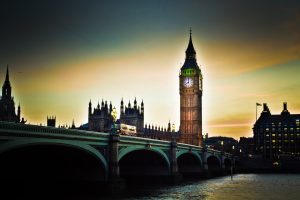 wanted it louder so added a much larger hammer. Three weeks later the bell broke. It was sent to Whitechapel Bell Foundry in pieces and melted down to create the new 13.5 ton bell. Once complete, it took 32 hours to winch it up the tower. Just two months after the bell named Big Ben first went into service in 1859, it was cracked. The hammer that was installed to ring the bell was roughly twice the size it should have been for a bell of that size. Nevertheless, the damage was done. The bell remains flawed to this day. A lighter hammer was fitted, and the bell was rotated slightly so that the hammer no longer hits the cracked section. The clock uses penny weights to keep the time accurate.
wanted it louder so added a much larger hammer. Three weeks later the bell broke. It was sent to Whitechapel Bell Foundry in pieces and melted down to create the new 13.5 ton bell. Once complete, it took 32 hours to winch it up the tower. Just two months after the bell named Big Ben first went into service in 1859, it was cracked. The hammer that was installed to ring the bell was roughly twice the size it should have been for a bell of that size. Nevertheless, the damage was done. The bell remains flawed to this day. A lighter hammer was fitted, and the bell was rotated slightly so that the hammer no longer hits the cracked section. The clock uses penny weights to keep the time accurate.

